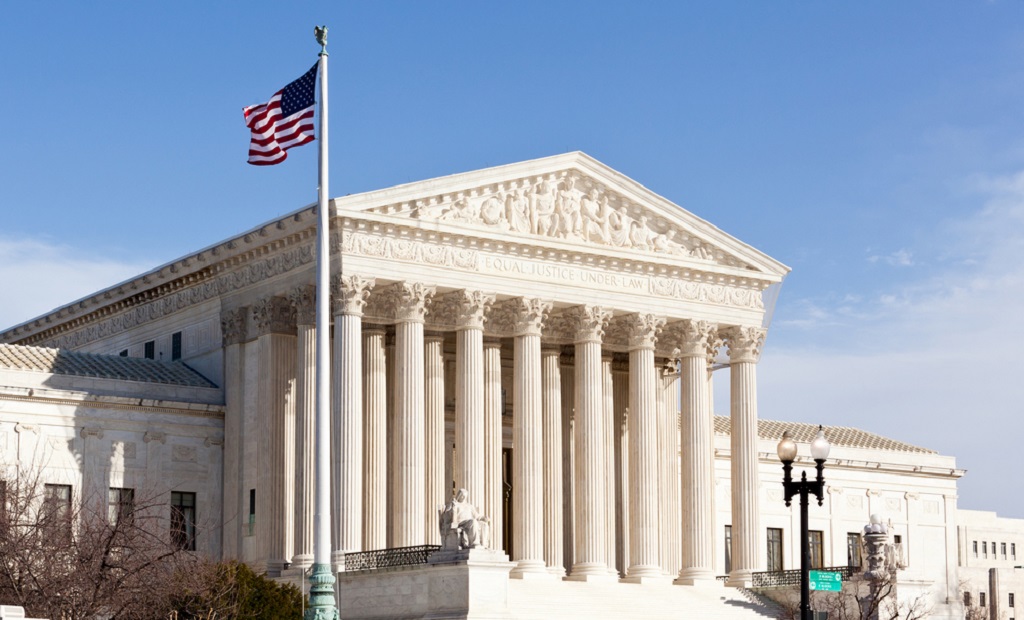Supremely Annoying: Female SCOTUS Justices Get Interrupted More

Just because a judge makes it to the Supreme Court, that doesn't mean the person gets to speak freely: A new study finds that female justices are interrupted more than male justices.
This happens even though female justices on the Supreme Court speak less than their male colleagues, according to the study, which will be published in an upcoming issue of the Virginia Law Review journal.
In the study, the researchers analyzed transcripts of court proceedings during three Supreme Court terms: 1990, 2002 and 2015. The researchers tallied up the interruptions that took place when lawyers were presenting their cases to the court, a process called oral arguments. [8 Supreme Court Decisions That Changed US Families]
In 1990, there was only one woman on the Supreme Court: Justice Sandra Day O'Connor. In 2002, Justice Ruth Bader Ginsburg was on the bench alongside Justice O'Connor. Finally, in 2015, there were three female Justices: Justice Ginsburg, Justice Sonia Sotomayor and Justice Elena Kagan.
The researchers found that, overall, the female justices were interrupted about three times more often than their male counterparts.
For example, in 2015, Justice Sotomayor was interrupted 60 times and Justice Kagan was interrupted 54 times, whereas Chief Justice John Roberts was interrupted 27 times and Justice Antonin Scalia was interrupted just 19 times.
The interruptions took on many forms, said study authors Tonja Jacobi, a law professor at Northwestern University Pritzker School of Law in Chicago, and Dylan Schweers, a law student at the same institution. For example, during a 2015 oral argument, Justice Anthony Kennedy interrupted Justice Ginsburg, and though he acknowledged that he was interrupting, he kept going.
Sign up for the Live Science daily newsletter now
Get the world’s most fascinating discoveries delivered straight to your inbox.
In other instances, male justices interrupted female justices to "mansplain," the researchers wrote. That is, the men either unnecessarily explained something to a female justice or explained to a third party what a woman was "trying to say," the study said.
The authors highlighted a 2002 instance in which Justice Kennedy interrupted Justice O'Connor and proceeded to "mansplain" to a lawyer by explaining a question O'Connor had asked perfectly clearly.
But male justices weren't the only ones who interrupted the female justices on the court: The researchers found that lawyers also interrupted the court's women. This is surprising, because lawyers are not allowed to interrupt justices, and the chief justice is supposed to intervene when this occurs, the researchers noted.
The researchers highlighted a 2002 instance in which Chief Justice William Rehnquist did, in fact, intervene when a lawyer interrupted Justice Scalia. But in different case, Justice Rehnquist did not intervene when a lawyer interrupted Justice Ginsburg.
But gender wasn't the only factor that played a role in interruptions, the researchers found. A justice's ideology also appeared to have an effect, the researchers found, with conservative justices interrupting liberal justices more often than the reverse occurred. However, the researchers noted out that it was difficult to disentangle the effects of gender and ideology, as the three female justices on the court in 2015 were all liberal.
Seniority also played a role, as more-senior justices were more likely to interrupt less-senior justices, the study said. However, this effect was smaller than that of gender and ideology, according to the study.
Originally published on Live Science.










